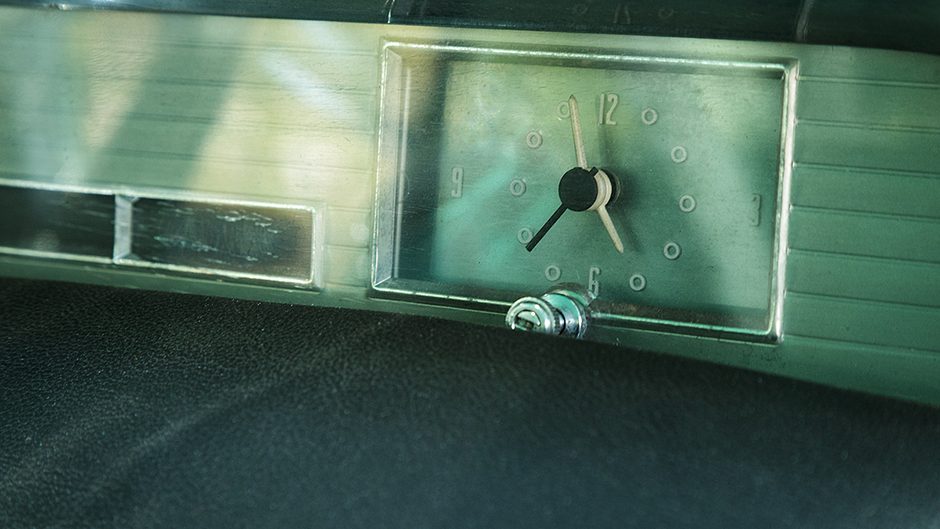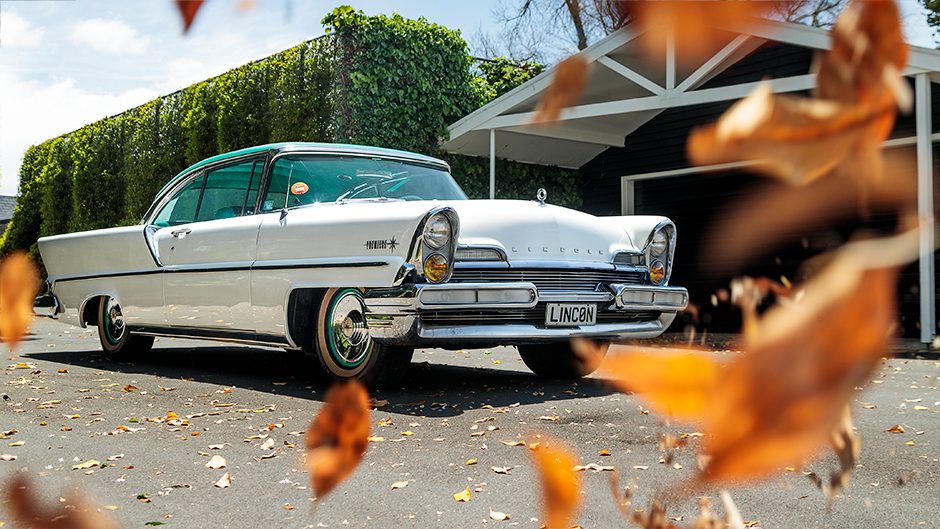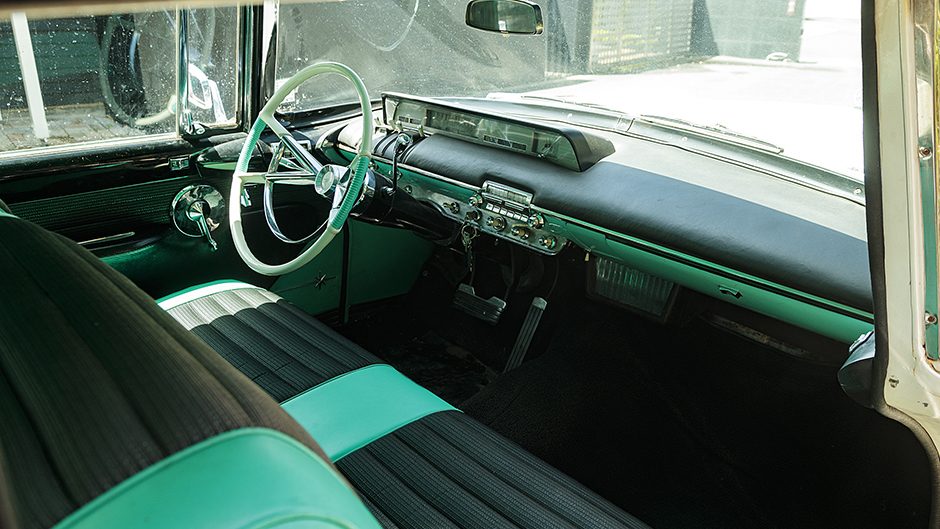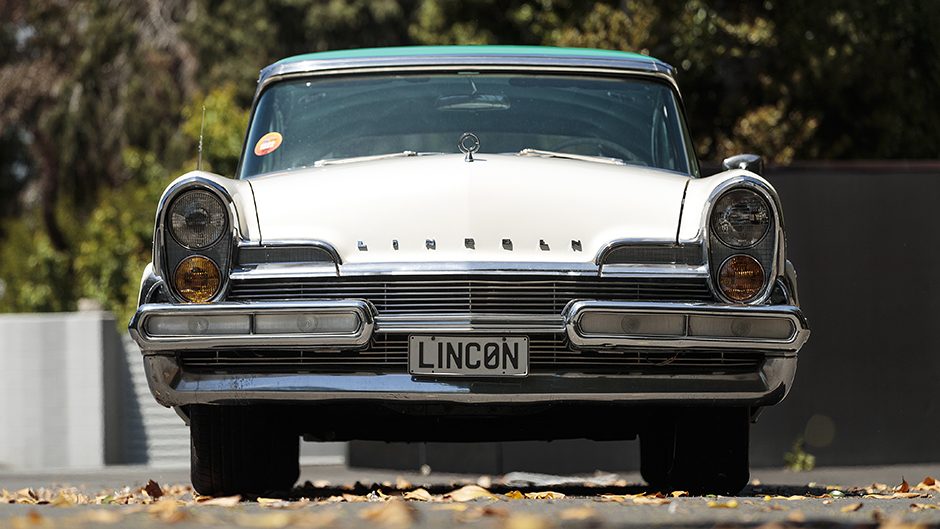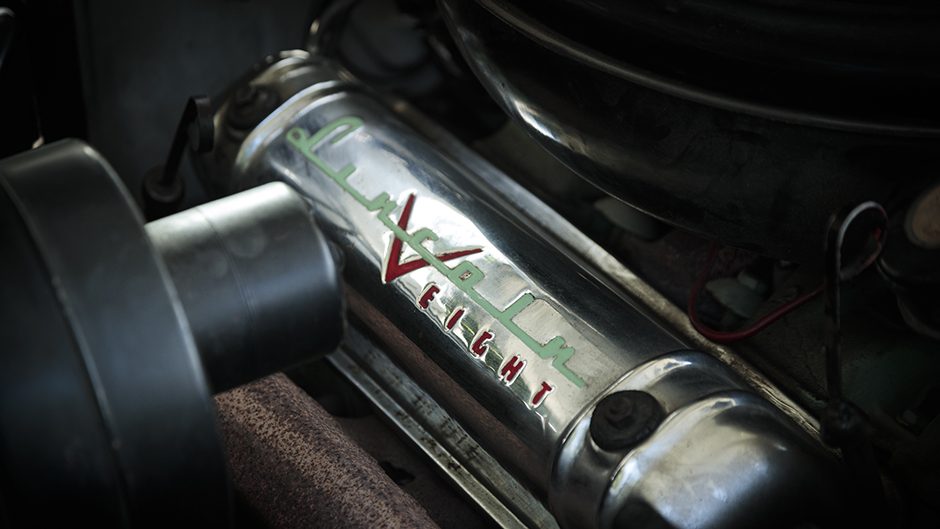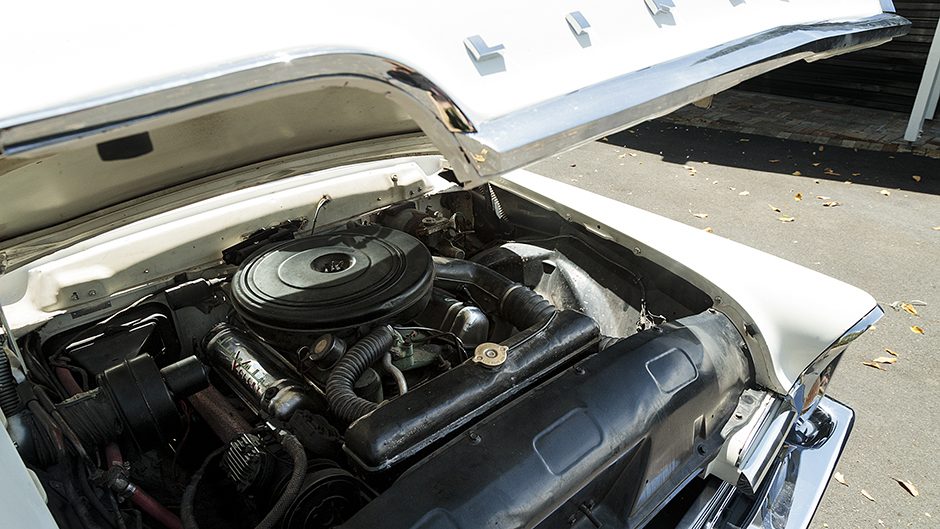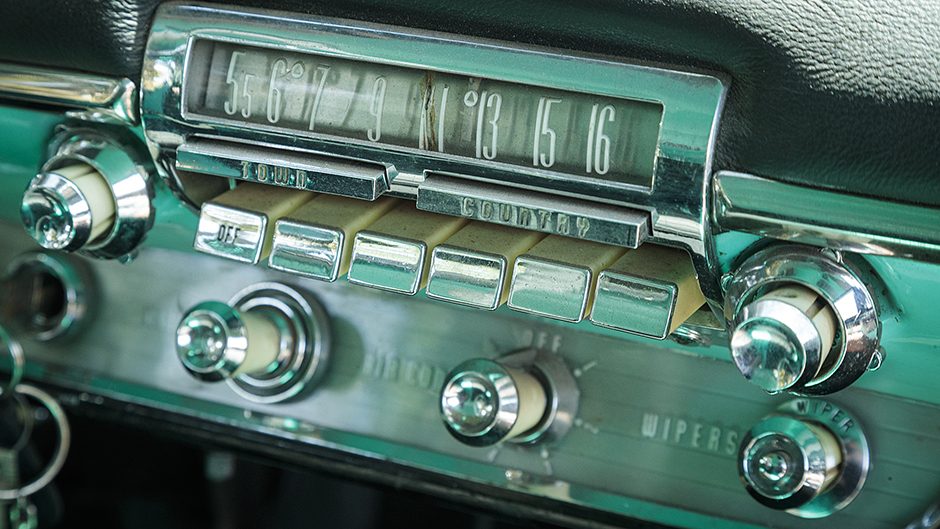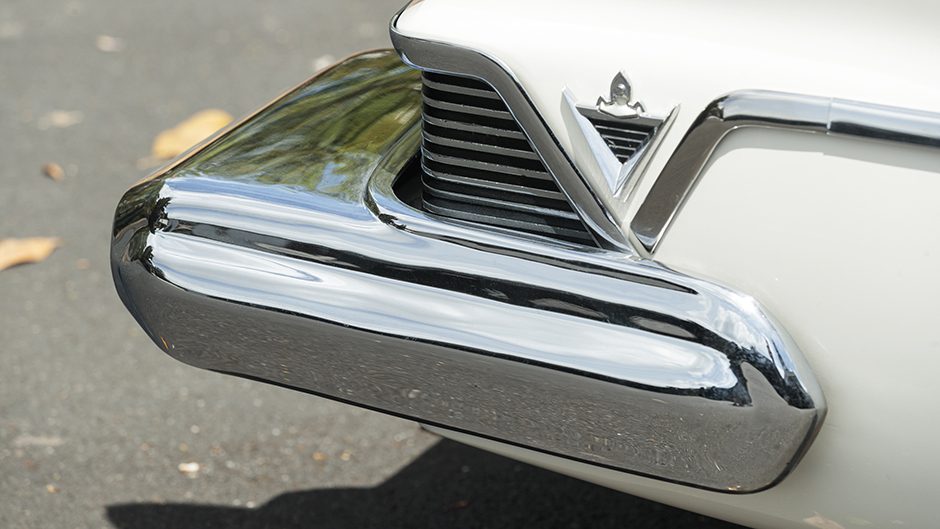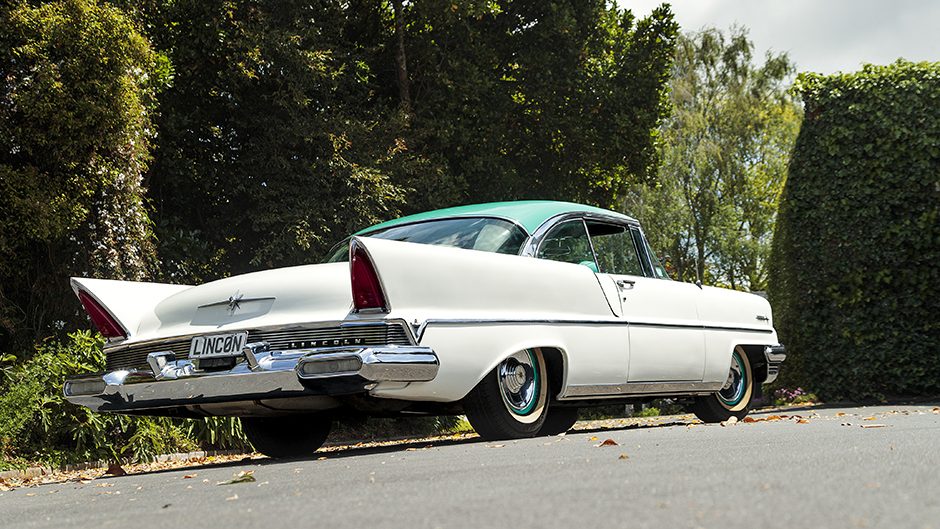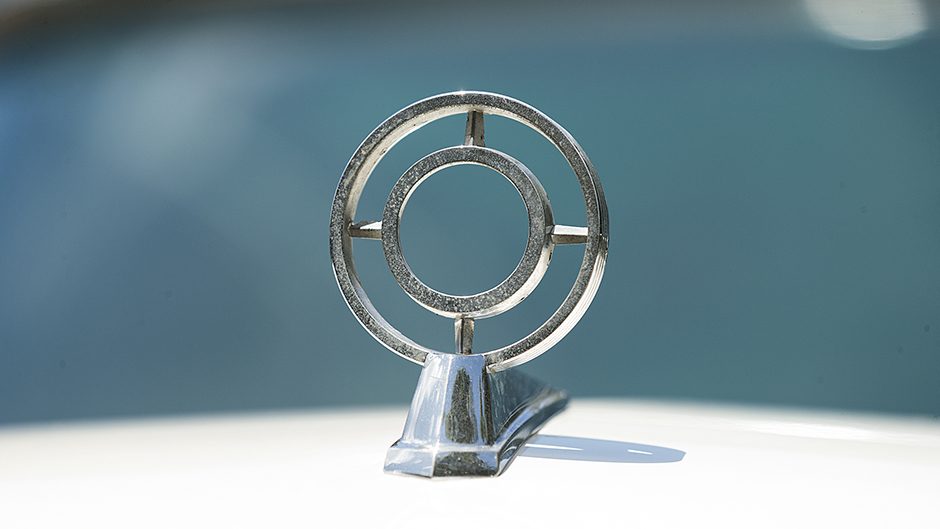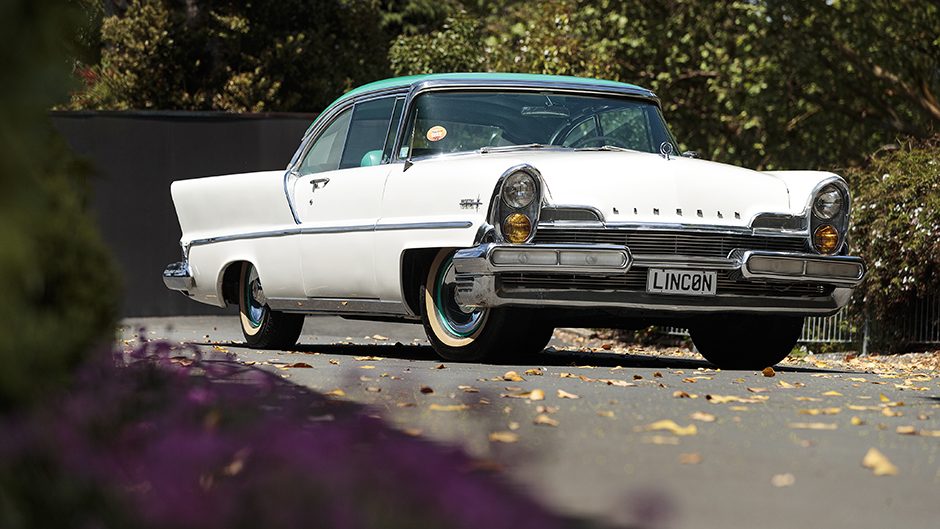1957 Lincoln Mercury Premiere
Words Paul Owen | Photos Tom Gasnier
Before Ford merged its two luxury divisions in 1958 – Continental and Lincoln – the latter had a quick growth spurt, and this 1957 Lincoln premiere is one of the last models to be produced before the glittering reign of the continental took over.
Back in the mid-50s, with the Korean War waning towards stalemate and the Cold War yet to fully ice over geopolitical relations, the competition amongst America’s car makers to occupy the luxury end of the market was fiercely hostile. The USA had become the richest nation on earth in the aftermath of WWII and Cadillac, Chrysler, Packard and Kaiser were trying to elbow each other aside in their rush to become America’s most aspirational automotive brand.
Ford too wanted a slice of the upmarket action, and began a two-pronged pincer attack through its Lincoln-Mercury and Continental divisions. The latter would produce no-expense-spared luxo barges of exaggerated proportions and stature. Meanwhile, Lincoln-Mercury would go after upper middle class car buyers with well-equipped cars that were more affordable than Continental’s models.
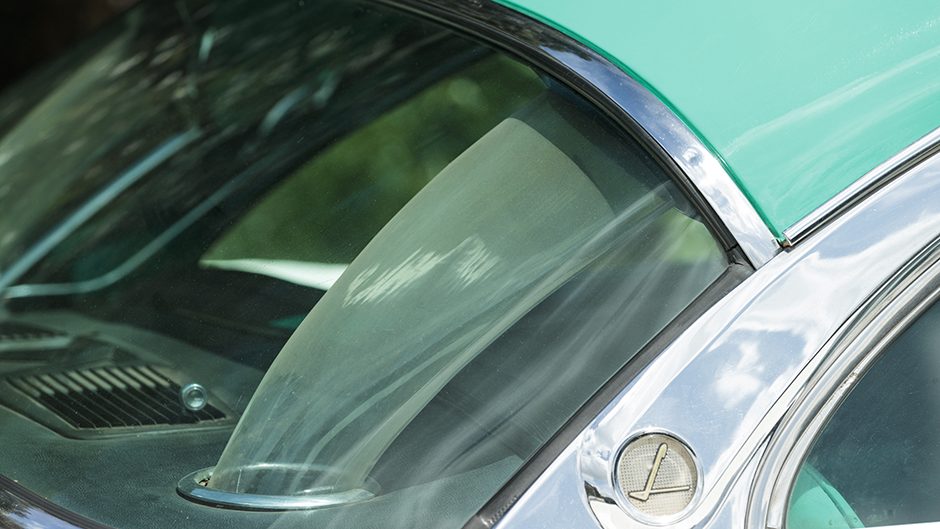
Design would play a big part in this luxury segment assault and Ford showed off two crucial concept cars in the early 1950s, whose styling would influence the look of its cars for the rest of the decade. One of those – the Futura – was so radical it would later earn a crust as the first Batmobile, and no concept better demonstrated the freedom that automotive designers enjoyed in the 1950s. It was a time when weirder was generally considered better.
You’ll find the Futura’s influence on the front end of our feature car here, a 1957 Lincoln Premiere, especially in the hooded headlights. Fortunately, these aren’t followed by the Futura’s bubble-glass roof, but the concept’s tail-fins are carried through, the Premiere being one of Ford’s most extravagantly finned cars. You’ll notice another Futura influence in the dual exhausts exiting via the bulbous rear bumper.
The Futura was designed by John Najjar, who was also responsible for the Mercury XM-800 concept that appeared a year earlier. Essentially, the front and rear of the Lincoln Premiere are influenced by the Futura while the side profile is inspired by the XM-800. Najjar, meanwhile, would find further design fame as the man who shaped the first Mustang prototype, known as Mustang I. Born into a family of Lebanese immigrants in Nebraska, his WWII contributions included the M4 Sherman tank, and the B-24 bomber.
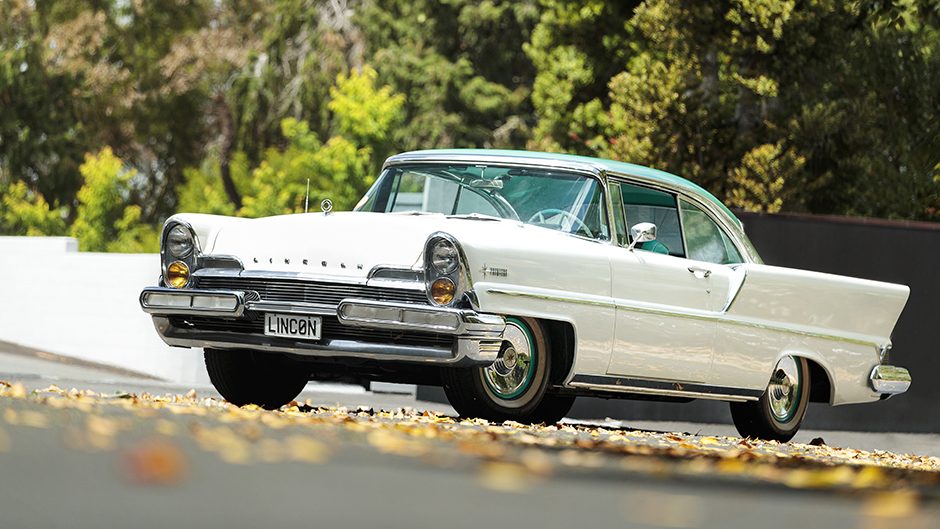
The Premiere made its debut in 1956, featuring a substantially longer and wider body than the Lincoln Capri. However it was the earlier Capris, especially those that dominated the infamously lethal Carrera Panamerica road race in the 1950s, that honed the hardware found beneath the Premiere. Lincoln had dominated the Mexican speed-fest during the early 1950s, the X-frame chassis and ball-joint suspension fettled by Earl MacPherson giving the cars their handling advantage. However the race was axed after an incident-packed 1954 event in which several drivers and spectators were killed. Afterwards, the likes of Lincoln, Hudson, and Oldsmobile took up stock-car racing instead, joining the newly formed NASCAR series.
It was the 1955 Lincoln Capri that sported Lincoln’s first in-house automatic gearbox – a torque converter equipped three-speed with planetary gears that replaced the GM Hydra-matic gearbox used by Lincoln since 1949. Besides it’s new ability to ‘kick-down’ a gear in response to a sudden application of throttle, this new ‘Turbo-Drive’ auto also introduced the PRNDL format that would soon become an industry standard.
Lincoln’s Y-block V8 was taken out to 368 cubic inches in 1956. Maximum power for the Premiere was 285bhp (213kW), and this was raised to 300bhp (224kW) for 1957 models. With 545Nm in 1956 form, rising to 563Nm in 1957, the Y-block lagged behind the Chrysler 392 Hemi V8 in both power and torque, and the triple two-barrel carburettor version of the Cadillac 365 also beat it for power. The 1957 Premiere would be one of the last Lincolns to use the Y-block, although it would continue to power Ford heavy trucks in 332ci form until the mid-1960s, a reflection of its durability.
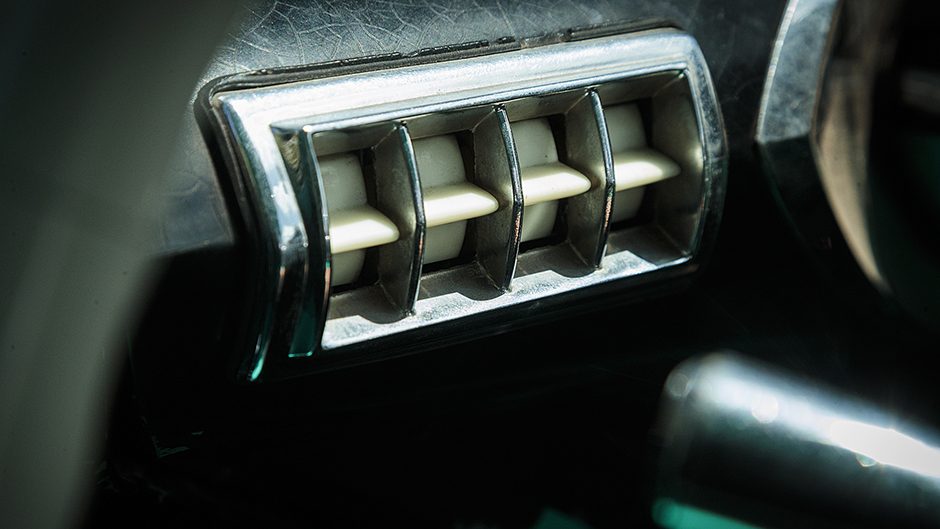
Lincoln had lead the way in comfort and convenience since 1953, when it introduced the world’s first four-way power-adjustable driver’s seat. This worked horizontally and vertically, but there was no ‘tilt’ function for the seat back.
Other optional powered equipment introduced that year included hydraulic steering assistance and brake boost, and Lincoln was a leader in air-conditioning as well. However, those AC systems were mounted in the massive trunks of the cars, and transferred cool air to the cabin via vents located above the rear side windows.
Another unique feature of Lincolns from the mid-1950s was the Multi-Luber system. This was activated by a pushbutton on the dash that would send grease to various bearings and joints all over the car, and deliver an extra splash of oil into the crankcase.
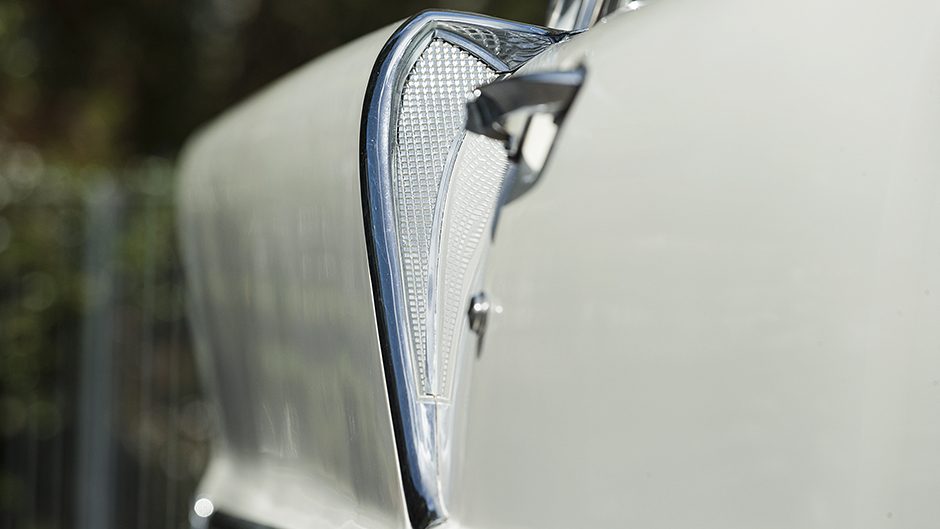
Add it all together, and you have a Lincoln Premiere with what was then the company’s best V8 engine served by a state-of-the-art automatic sitting in a capable chassis with a stylish cabin chock full of comfort and convenience equipment. The 1956 Premiere became the first car ever to win the outstanding product design award dished out annually by the Industrial Designers Institute in Chicago. The Premiere really deserved more time in the limelight, but it was overshadowed by the car that the Continental division had released late in 1955. The equally elegant but much more luxurious Continental Mark II stole all its oxygen.
Here we see the two sons of Edsel Ford, William Clay Jnr and Benson, indulging in the creation of fitting tributes to their father as they led their respective luxury divisions; WCJ headed a newly established Continental Motors, and Benson headed the management of Lincoln-Mercury. The two Ford scions were careful to ensure that the Mark II and the Premiere occupied their own niches in the market, especially as the Mark II cost nearly $US10,000 at launch and the Premiere listed at $4601.
Any rivalry between the Ford luxury divisions didn’t last long though, as the Continental division was merged with Lincoln in the middle of 1956, and Mercury was also allowed to break free and pursue its own fortunes. William Clay Jnr Ford would now lead the Lincoln brand to its best year in sales, when 50,322 cars were sold, setting a record that would last 10 years. Of that number, 41,531 were Premieres.
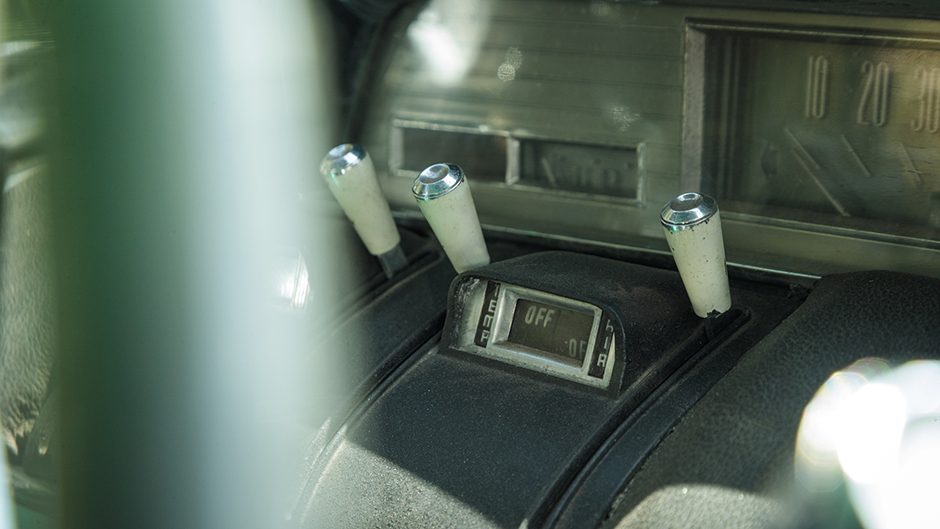
The Continental Mark II was inarguably an excellent car for its day, and it pulled strongly at the heartstrings by bringing a revered nameplate back from oblivion. William Jnr and Benson also considered it to be a fitting epitaph for their father, a man who constantly strived to lead Ford towards new technical heights despite fierce opposition from Henry Ford. It was certainly a more respected marker of Ford history than the Edsel. The motoring journalists of the day were absolutely gushing in their praise of the Mark II. To be fair, some were equally enamoured of the Premiere, which shared the same powertrain and underpinnings as the Continental, and was far more accessible. One called it “quite possibly the best-looking American car in volume production this year, and one of the finest of the decade so far.”
Beside the additional engine performance, the only change to the Premiere for the 1957 model year was the introduction of a four-door sedan to go with the two-door Coupe and Convertible that had flown the Lincoln flag so successfully throughout 1956. But it was the two-door Coupe that attracted Hamiltonian Robin Ratcliffe’s interest when he first spotted it at a hot-rod show in Kumeu. “It really caught my eye, and I thought ‘that’s a great looking car.”
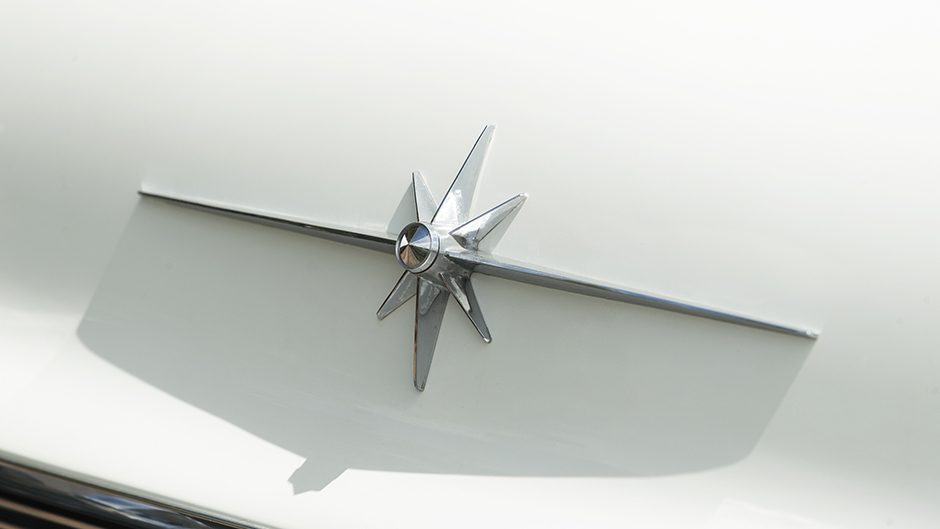
Already an owner of a 1959 Cadillac convertible, Ratcliffe decided the 1957 Premiere would be a great car for his wife, Colleen. To him, it was a perfect prop to match Colleen’s affections for Betty Boop, the 1930s cartoon character that Max Fleischer based on a black jazz singer. She who would go on to become a fashion/culture icon during the 1950s.
However, the Ratcliffes have changed their mind about the Premiere, and now consider a 1957 Dodge Custom Royal (in red, of course) to be a better match for the raunchy image of Betty Boop. Which means there’s now an opportunity to buy this car. Anyone want one of the last Lincoln-Mercurys?



